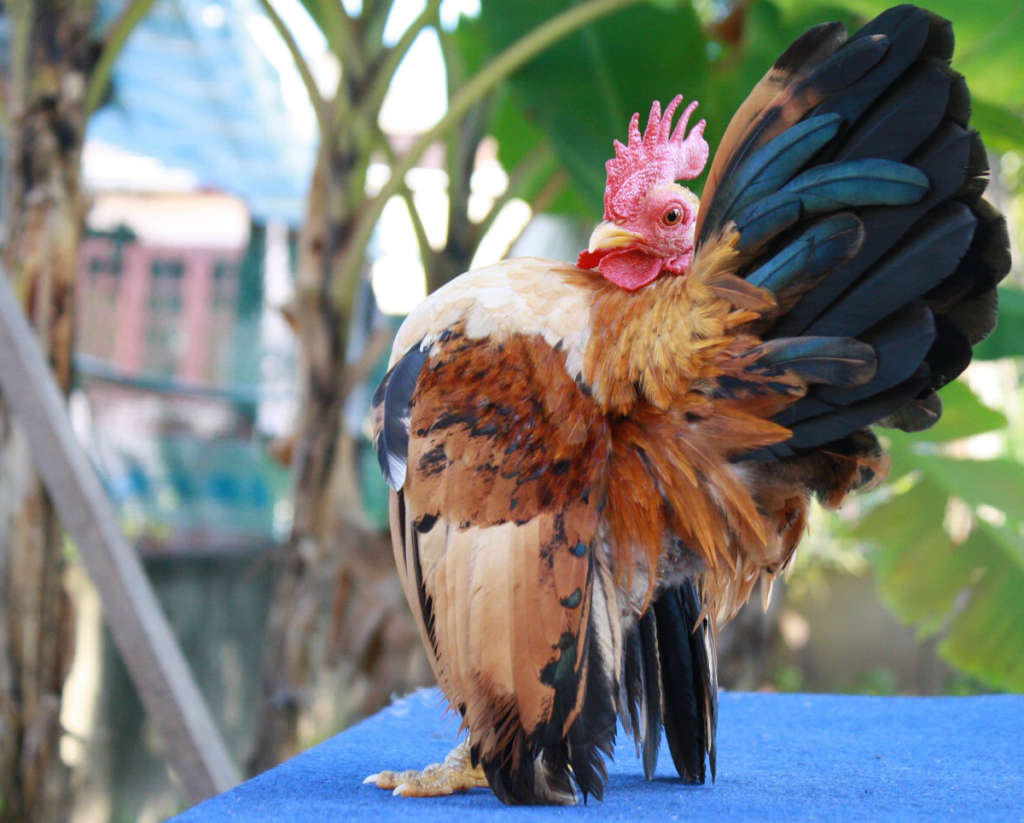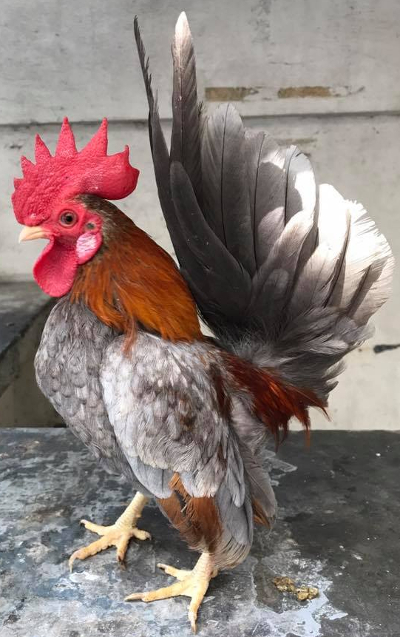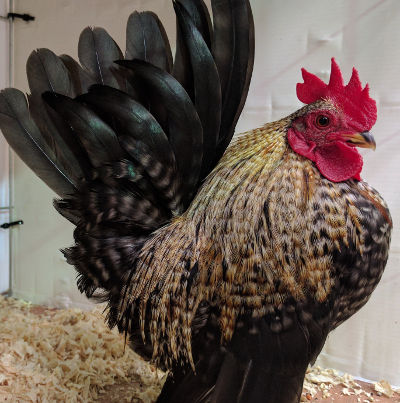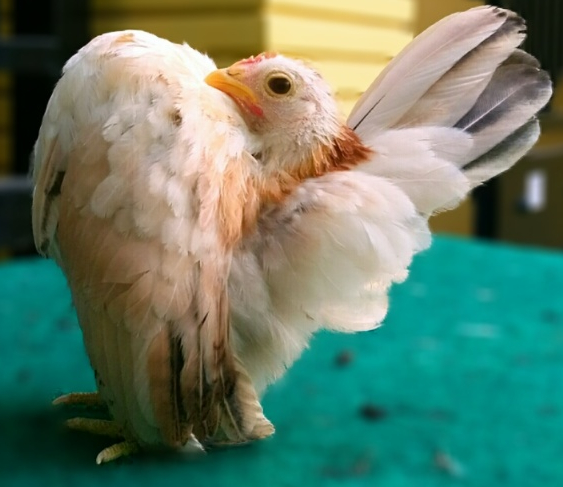Types and varieties of Serama bantams.

What are the types and recognised varieties of Serama bantams?
Typical Malaysian Serama Types are:
Slim - Slim is a relatively tall, slender bird with a very small breast. This type looks as though it could fit into a cylinder without problem. This is the characteristic V shape that most people associate with the Serama.
Below: The slim type of Serama.

Ball - Ball are quite round in appearance but with the chickens breasts held high. The legs are short and the wings are not held at vertical, but closer to 45 degrees or less, due to wing and leg length.
Below: The ball Serama with a high chest.

Apple - Apple is different to ball. The breast on the Apple Serama is a bit lower and larger and the legs on this type are medium in length.
Below: An Apple shape Serama Bantam.

Dragon - Dragons are the extreme type of Serama. Their head is sometimes held so far back that, on some individuals, the breast is actually held higher than the head. Wings are held vertically, and legs tend to be medium to short in length.
Below: A dragon Serama bantam.

The ball, slim, apple and dragon forms of Serama are seen rarely at this time. Most were just different phenotype seen during the development of the Malaysian Serama, not independently developed styles and without independent standards.
The type is the outline of the bird or "silhouette" and this is particularly important with the Serama. It is the general form of the overall bird and distinguishes the bird at a glance with it's upright tail, high prominent breast, low wing and head held far back nearly against the tail.
The overall effect of tail and neck/head is of a V shape. The back should be very short and nearly completely covered by the hackle and saddles so as to appear nearly nonexistent.
The Serama come in 4 classes. A, B ,C or D in Malaysia or Classes 1,2,3 or 4 elsewhere. This refers to their size, weight and conformity.
The weight standard for the Serama is:
Mature Serama Males :
Class A up to 350 grams (12.35 oz)
Class B up to 500 grams (17.64 oz)
Class C up to 600 grams (21.16 oz)
Class D - over (22.17 ounces)
Mature Serama Females :
Class A up to 325 grams (11.46 oz)
Class B up to 425 grams (14.99 oz)
Class C up to 525 grams (18.52 oz)
The Serama is the smallest and proudest chicken in the world. Some people believe them to look like little soldiers, especially when in pose mode. Due to their size, temperament and friendliness a lot of people in Malaysia keep them in their houses as house pets.
Serama mature at approximately 25 to 35 weeks of age.
Serama, also commonly known as the Ayam Serama or Malaysian Serama, were developed in the state of Kelantan, Malaysia. They are the result of crossing some local bantams there, including what is believed to be Japanese (Chabo). Serama are the smallest chicken in the world. Class A Serama are very small and light weight, and as such are regarded as the lightest chickens in the world.
Why do Serama pose?
It is their natural stance, they have been bred to be show pieces and their frames are built that way. They were bred to have a very upright, vertical stance with a pronounced breast a bit like a pigeon.
Posing is part, a big part, of the training and makes up 25% of the score the bird receives from the judges.
My little rooster likes to parade around when I come to the cage. He literally will try to walk on his tippy-toes. None of my other roosters, bantam or standard, do that.
